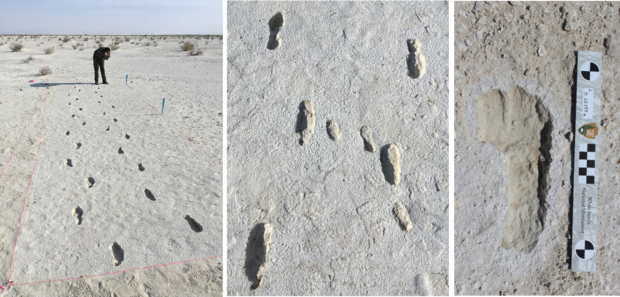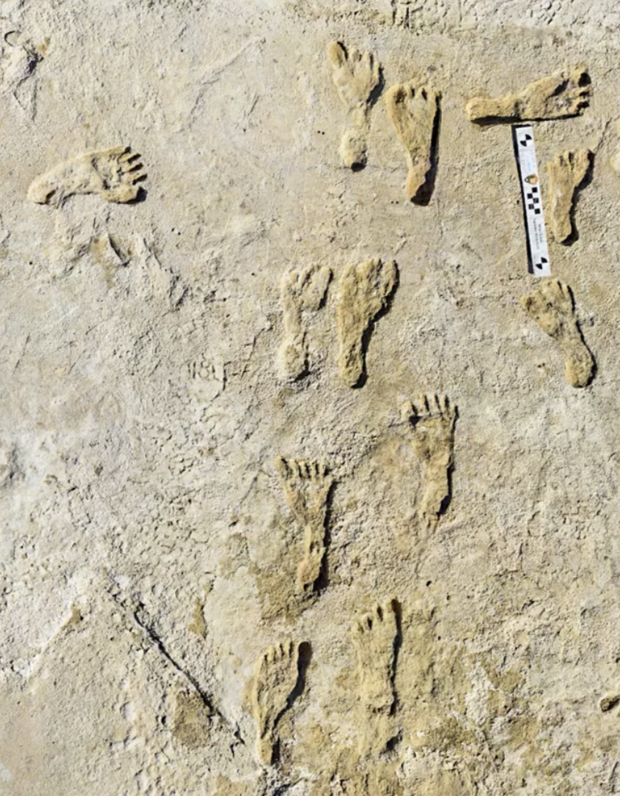Scientists have confirmed that fossilized footprints found in New Mexico are between 21,000 and 23,000 years old. This discovery suggests that humans existed in North America much earlier than previously believed.
The originally study about the footprints, discovered embedded in the ground of White Sands National Park in New Mexico, was published in September 2021. The findings sparked conversations, with some questioning the accuracy of the findings.
Previously, it was believed that humans existed in North America somewhere between 13,500 and 16,000 years ago. However, the presence of footprints with five distinct toes raised doubts about this timeline. Were the prints really between 21,000 and 23,000 years old?
Researchers from the U.S. Geological Survey (USGS) and other scientists decided to conduct a follow-up study using two new approaches to determine the age of the prints.
“The immediate reaction in some circles of the archeological community was that the accuracy of our dating was insufficient to make the extraordinary claim that humans were present in North America during the Last Glacial Maximum,” said co-author of the new study, Jeff Pigati, a USGS research geologist. “But our targeted methodology in this current research really paid off.”
In the initial study, the scientists used seeds from the Ruppia cirrhosa plant found in the fossils. They used radiocarbon dating to estimate the age, but due to the carbon-capturing ability of aquatic plants, the age estimate could have been inaccurate. In the follow-up study, they used radiocarbon dating on conifer pollen found in the same layers. They also tested quartz grains found in the footprints using optically stimulated luminescence. Both methods confirmed an age range of 21,000 to 23,000 years.
With three corroborating pieces of evidence, the USGS asserts that it is unlikely the age range is incorrect.
Footprints have been previously found at White Sands National Park. Scientists discovered footprints in a lakebed in 2006, which included human and sloth footprints. Subsequent excavations revealed direwolf prints, which were dated to 18,000 years using nearby ancient seeds. In 2018, footprints of a female and a toddler were also found.
Furthermore, the footprints discovered in 2018 tell a fascinating story. The female’s footprints showed her walking for almost a mile, occasionally accompanied by a toddler’s footprints. The evidence suggests that she carried the child, shifting them from side to side as they walked. The additional weight caused the footprints to broaden and slip in the mud.
The 2021 study found that the majority of the footprints belonged to teens and children, suggesting a division of labor with teenagers performing tasks while children accompanied them.
Denial of responsibility! Vigour Times is an automatic aggregator of Global media. In each content, the hyperlink to the primary source is specified. All trademarks belong to their rightful owners, and all materials to their authors. For any complaint, please reach us at – [email protected]. We will take necessary action within 24 hours.





